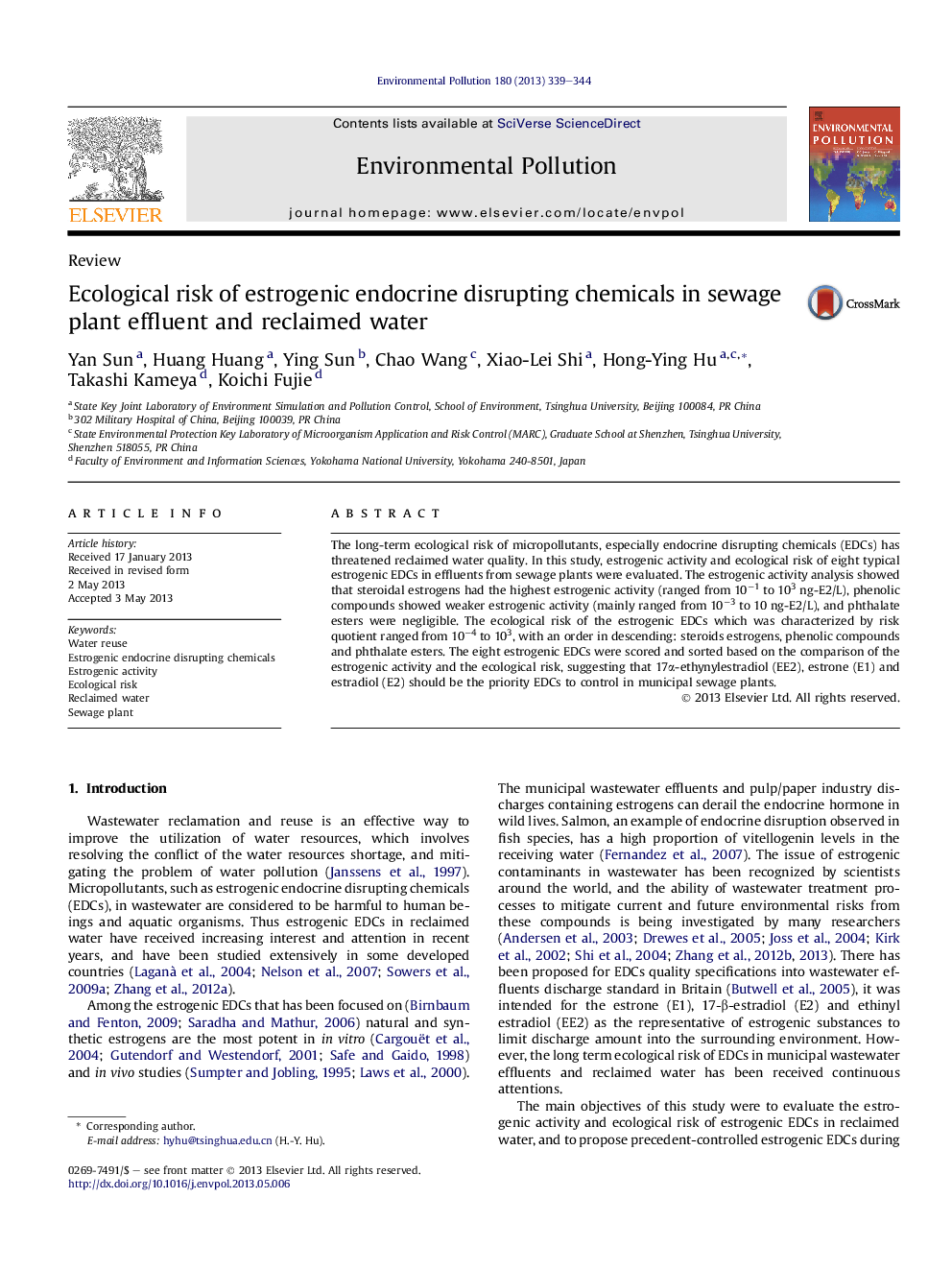| Article ID | Journal | Published Year | Pages | File Type |
|---|---|---|---|---|
| 6317778 | Environmental Pollution | 2013 | 6 Pages |
Abstract
The long-term ecological risk of micropollutants, especially endocrine disrupting chemicals (EDCs) has threatened reclaimed water quality. In this study, estrogenic activity and ecological risk of eight typical estrogenic EDCs in effluents from sewage plants were evaluated. The estrogenic activity analysis showed that steroidal estrogens had the highest estrogenic activity (ranged from 10â1 to 103 ng-E2/L), phenolic compounds showed weaker estrogenic activity (mainly ranged from 10â3 to 10 ng-E2/L), and phthalate esters were negligible. The ecological risk of the estrogenic EDCs which was characterized by risk quotient ranged from 10â4 to 103, with an order in descending: steroids estrogens, phenolic compounds and phthalate esters. The eight estrogenic EDCs were scored and sorted based on the comparison of the estrogenic activity and the ecological risk, suggesting that 17α-ethynylestradiol (EE2), estrone (E1) and estradiol (E2) should be the priority EDCs to control in municipal sewage plants.
Related Topics
Life Sciences
Environmental Science
Environmental Chemistry
Authors
Yan Sun, Huang Huang, Ying Sun, Chao Wang, Xiao-Lei Shi, Hong-Ying Hu, Takashi Kameya, Koichi Fujie,
